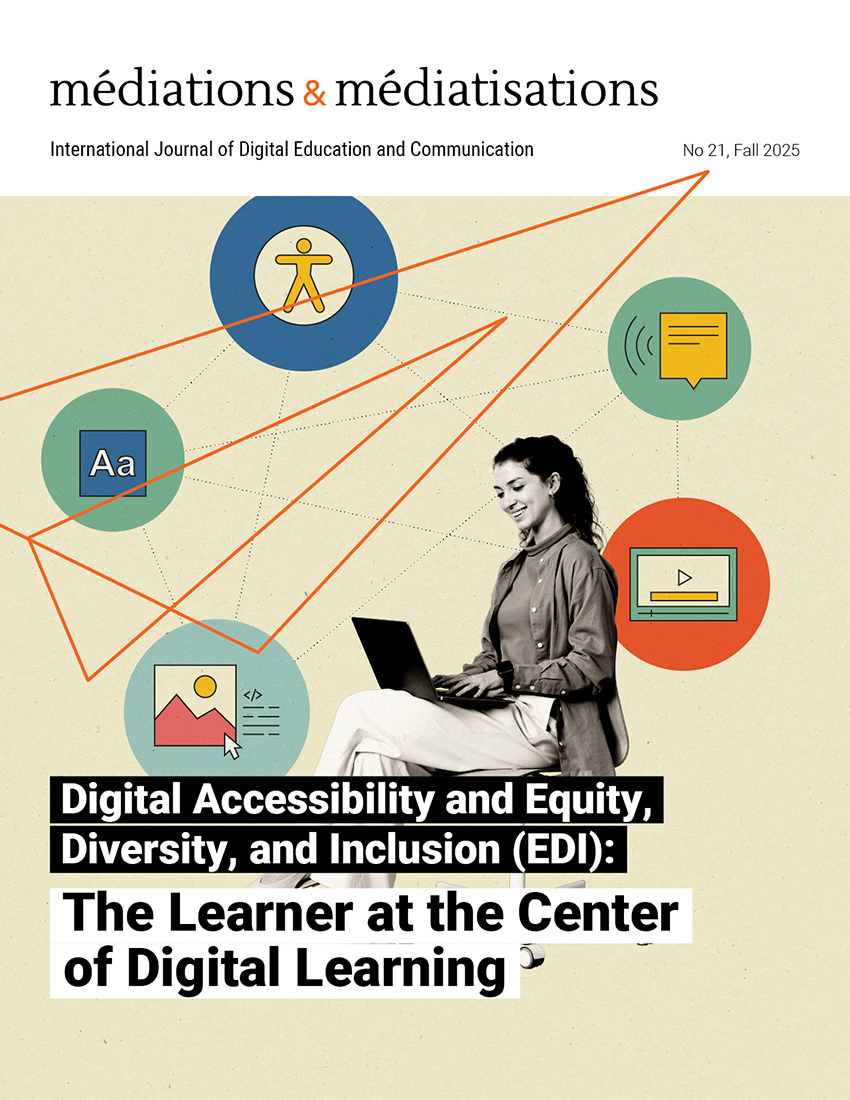EDI, the Hidden Contribution of Editorial Chain
Main Article Content
Abstract
Taking equity, diversity and inclusion (EDI) into account in university teaching is often approached from two distinct perspectives: on the one hand, digital materials accessibility and, on the other, the transformation of teaching practices. This article looks at how the use of an editorial chain in resource production leads to pedagogical revision of materials and a reflective approach to making teaching accessible. The term ‘editorial chain’ covers tools that require a separation of content and form. The advantages and disadvantages of these tools are outlined in greater detail for the Scenari solution used in this study. Drawing on workshops carried out in videoconference or face-to-face with volunteer science teachers in different production contexts, we examine the difficulties and benefits of the chosen approach, which result in improvement and better student inclusion during teaching sessions.
Downloads
Article Details

This work is licensed under a Creative Commons Attribution-NonCommercial-ShareAlike 4.0 International License.
References
CAST (2011). Lignes directrices sur la conception universelle de l’apprentissage (Universal Design for Learning-UDL). https://pcua.ca/fichiers/documents/pdf/.
Crozat, S. (2007). Scenari, la chaîne éditoriale libre. Eyrolles.
Kennel, S., Guillon, S., Caublot, M., et Rohmer, O. (2021). La pédagogie inclusive : représentations et pratiques des enseignants à l’université. La Nouvelle revue de l’adaptation et de la scolarisation, 2(3), 23 45. https://doi.org/10.3917/nresi.090.0023 DOI: https://doi.org/10.3917/nresi.090.0023
Observatoire sur la réussite en enseignement supérieur (2023). Équité, diversité et inclusion (EDI) : au cœur de la réussite étudiante. https://oresquebec.ca/dossiers/equite-diversite-et-inclusion-edi-au-coeur-de-la-reussite-etudiante/

